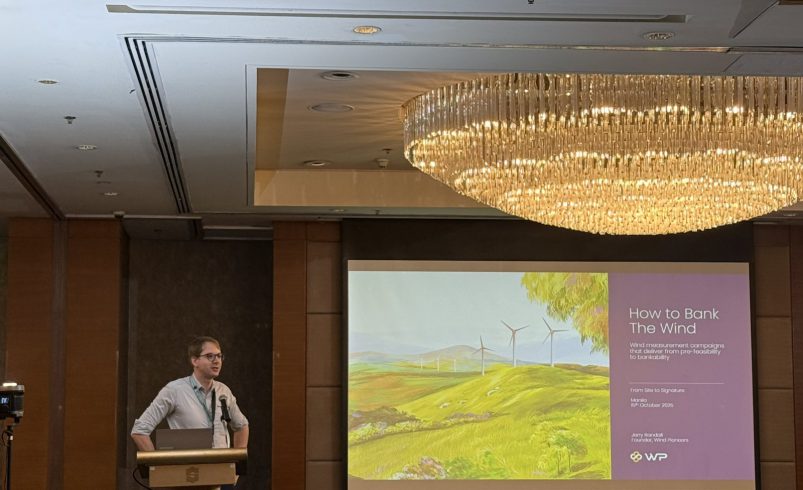Jerry Randall: Reliable wind data, not rigid rules, drive project success
- October 21, 2025
- 0

Developers should design wind measurement campaigns that produce reliable and defensible data rather than focus on how long the instruments are left on site, said Jerry Randall, founder of Wind Pioneers, during the From Site to Signature: Accelerating Wind Energy Projects in the Philippines forum held on October 15 at Shangri-La Makati and organized by Philsurv Geodetic Services.
Randall said that for a wind project to move from feasibility to bankability, the goal should be to collect data that lenders can trust, not just to complete a fixed number of months of observation. “Bankability is not the goal but the result,” he explained. “If you do your homework, bankability will follow.”
He described the wind development process as a “long and winding road,” beginning with early-stage feasibility studies and ending with financial close. Each stage, he said, requires a different approach to measurement. Developers can start with simple, low-cost setups to confirm site potential, then expand their systems with LiDARs, met masts, and redundancy instruments as the project advances.
Randall also challenged several misconceptions in the industry. These range from such beliefs as measurements must always run for 12 months, that LiDARs cannot perform well in complex terrain, or that their turbulence data are unusable. He said these assumptions have slowed innovation and limited developers’ ability to design efficient campaigns.
He outlined eight c
Randall also added that developers should engage with lenders and advisors early, ideally 12 to 18 months before financial close. This is to make sure their data and reports align with what financiers expect. This coordination, he said, often prevents costly redesigns and delays.
He concluded by encouraging developers to focus on understand
Do you think local developers are ready to move toward more data-driven, bankable wind projects?
Follow Power Philippines on Facebook and LinkedIn or join our Viber community for more updates.